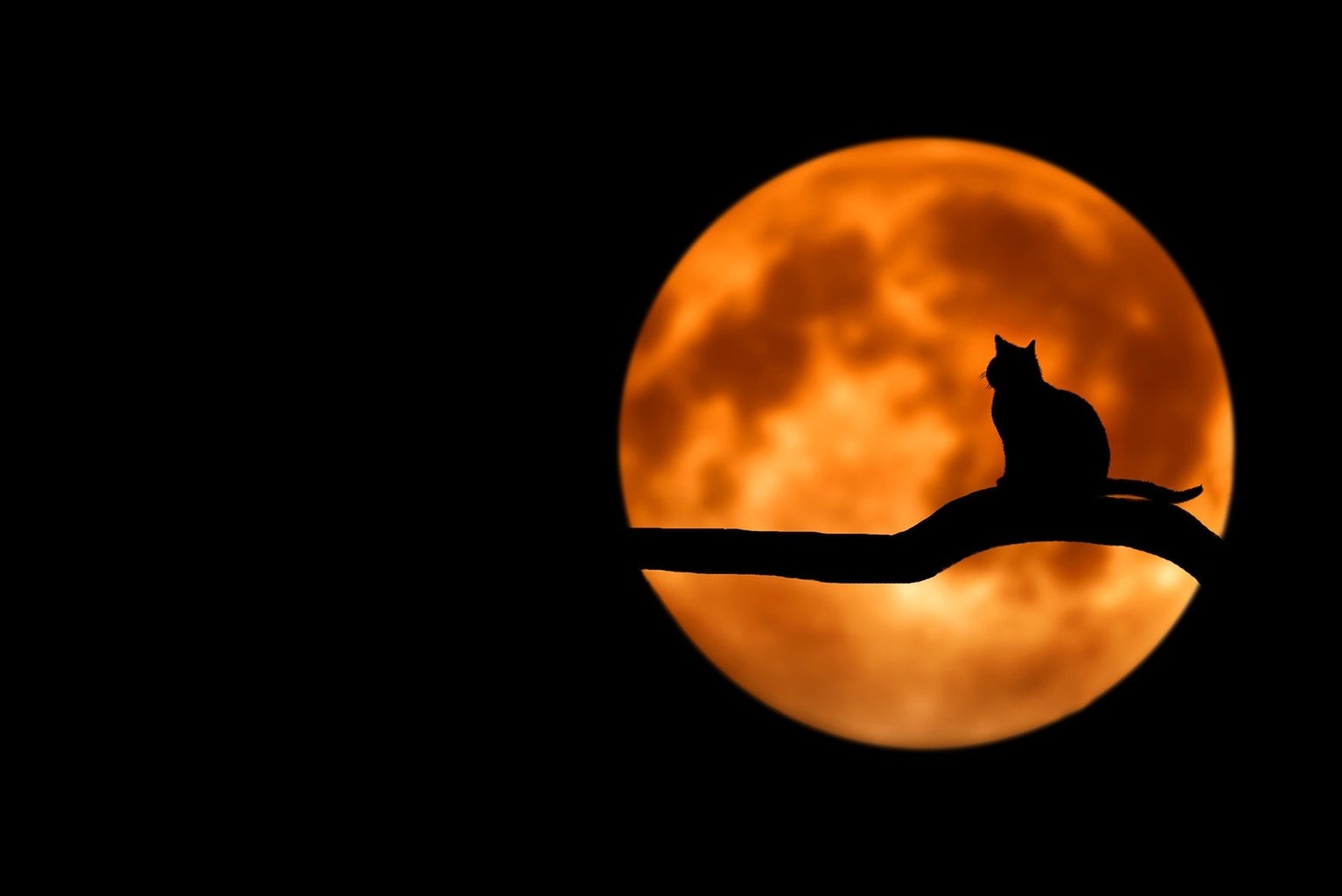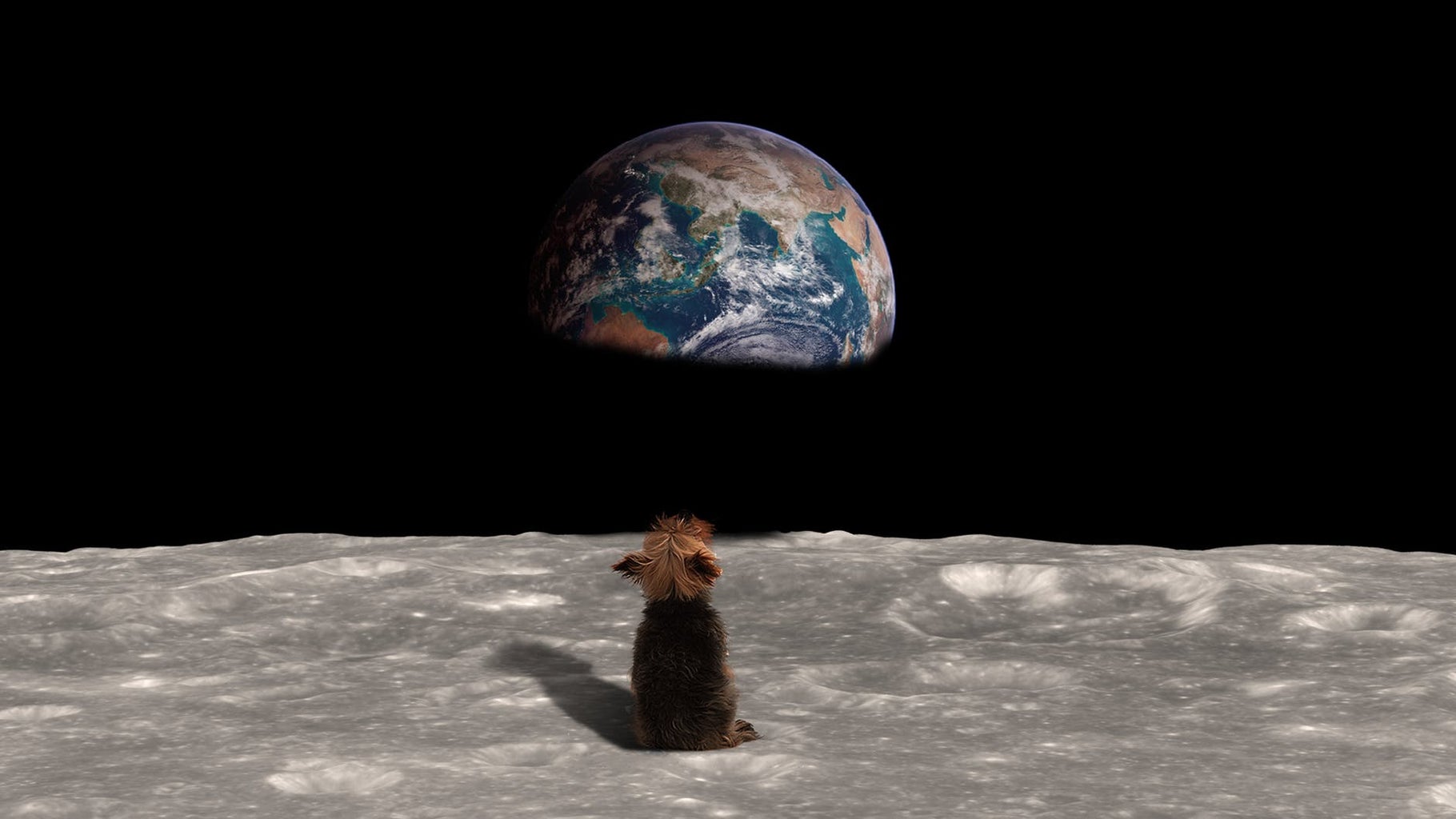Like most people, I used to notice the moon on occasion without thinking much of it — whether she was waxing or waning, where she was in the sky, what time she would be rising or setting. Now, I resist the urge to give a TED Talk about the moon every single time I catch a glimpse of her. (Yes, I’m going to refer to the moon with she/her pronouns because she’s obviously a woman — she just has a certain vibe that’s been picked up by most historic civilizations, and besides, why else would JFK the womanizer have been so obsessed with getting to her?)
Recently in my astronomy class, we learned about when the moon rises and sets in her different phases and why, and I found it really interesting (It’s the kind of thing people probably thought about a lot more before electric lights made day and night less relevant to society). With this information in mind, here is my personal opinion on the different phases of the moon.
#8: Third quarter
Look, I appreciate the moon in all of her phases, but this one just doesn’t do much for me. The moon doesn’t rise until the middle of the night, and then she’s out all morning, but that’s just not when I’m typically looking at the sky. Maybe people who can be bothered to wake up early offer a different perspective.
#7: Waning crescent
If there is one thing you will not catch me doing unless I’m under duress, it’s waking up for the sunrise. Unfortunately, the waning crescent rises just before sunrise, so I rarely catch a glimpse of her. Of course, the waning crescent stays in the sky for most of the rest of the day, but is nearly impossible to see because she’s so close to the sun in a bright sky. I’m sure she looks nice with sunrises, but I’m not really planning to check.
#6: New moon
This phase is good for stargazing, which I can respect, but of course I miss her when she’s gone. Not that she’s actually gone at any point — it’s just that her light side is facing away from us. The new moon also gets some points for being the phase during which solar eclipses happen. I was fortunate enough to see the 2017 total solar eclipse from the Midwest, and it was incredible. There’s another one coming up on April 8, 2024, if anyone wants to plot out a destination along the path of totality. We should go somewhere cool, like Niagara Falls, or Hot Springs National Park in Arkansas, or the middle of the wilderness in Maine. Just a casual suggestion. I’m not trying to use it to start a cult or anything… unless people are interested.
#5: Waxing gibbous
In this phase, the moon is rising a bit later in the afternoon each day, and there’s a palpable excitement for the full moon to come around. This is a good moon phase, no notes — I just like the other ones more.
#4: First quarter
Lately, this phase has really been growing on me (I’m sorry, I had to say it). She’s a lovely sight to see rising in the sky on an afternoon walk. During the day, she isn’t too hard to photograph; it’s only as the sky darkens that the phone camera gets confused by her luminescence. Which isn’t innate, of course, just a reflection of the sun, but don’t remind her of that. She’s been slowly creeping away from the earth, a few centimeters per year, and at the current rate, she won’t be able to cover the sun for total solar eclipses in 600 million short years. We’ve got to be extra nice if we want to convince her to come back. Slay queen! Look at you emitting all that light by yourself!
#3: Waning gibbous
In the days after the full moon, she doesn’t stop serving. She’s just a bit more fashionably late every night. I personally think that watching the mostly-full moon rise in a dark night sky is an excellent photo op, which is why I hate cell phones that can never properly capture the beauty.
#2: Full moon
What can I say that hasn’t already been said? The full moon shows us herself in full glory. Of course, it’s always the same side of the moon because it’s tidally locked to Earth; the consistency is comforting. With a telescope, you can really appreciate the full extent of her beauty. Werewolves emerge to fill the ecological niche that’s been left empty by the extermination of regular wolves from their historic habitat. It’s a real problem, you know. Overpopulation of deer and other prey animals can throw off the whole ecosystem. I don’t think we’re appreciating how helpful werewolves could be in that sense.
#1: Waxing crescent
Looking through my camera roll, the thing that immediately becomes evident is my obsession with sunsets. Waxing crescent is the moon phase that holds the honor of coexisting with the sunset. Because the moon is rising and setting shortly after the sun while in this phase, her silver sliver is easily distinguishable in the darkening sky. Seeing the waxing crescent moon shining amid cotton-candy sunset clouds is one of my favorite views. Not to mention, this moon phase is considerably more agreeable with phone cameras than the fuller phases, so I’m better able to capture the moment. Best-case scenario in my book is that the pretty clouds from the sunset move away as the crescent moon sets, and you’re left with a clear night sky.
For all I’m judging the moon here, she could be judging us right back. From the moon, you can see the Earth go through the same phases, but they’re reversed. During a new moon, astronauts on the moon would see a full earth, and during a full moon, the earth wouldn’t be visible to them. Hopefully in a few years we can get some personal rankings of earth phases (Not mine. I’m not going up there. I love oxygen too much. But someone should totally get on that).




